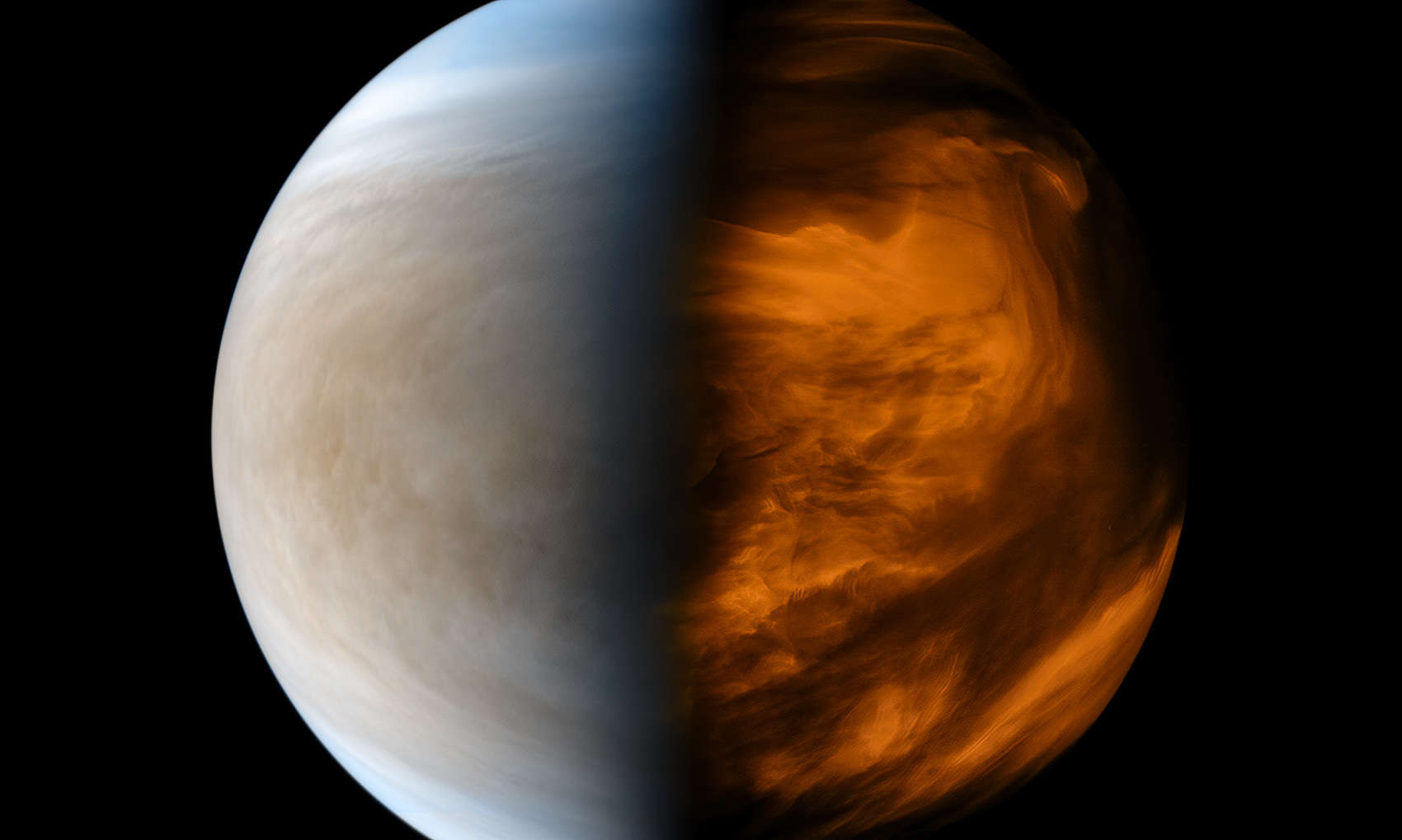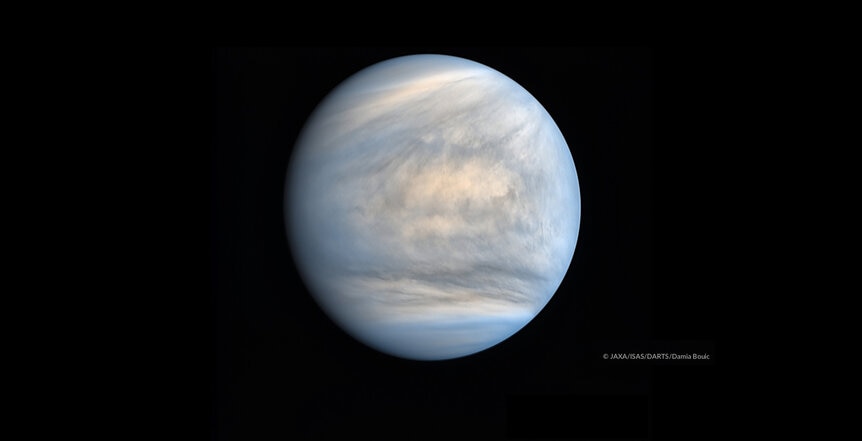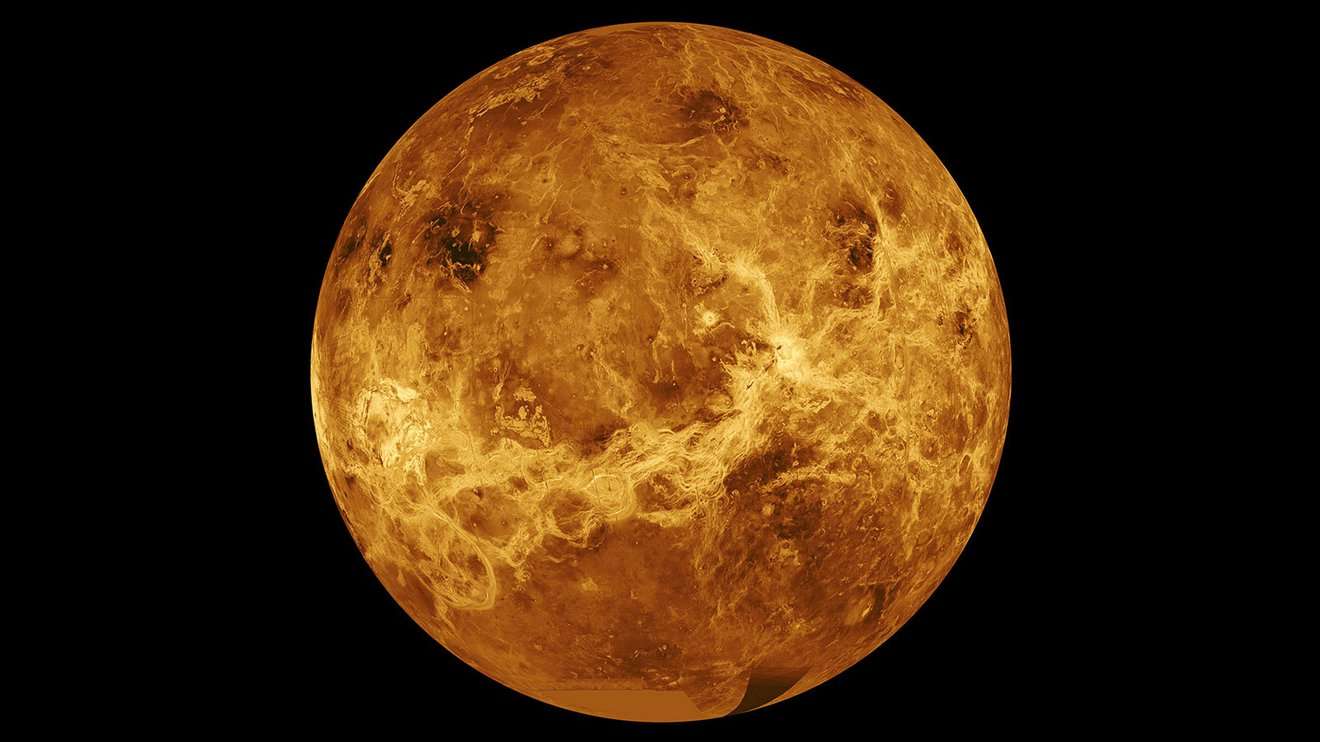Create a free profile to get unlimited access to exclusive videos, sweepstakes, and more!
It’s getting harder for life in Venus’ atmosphere to exist
Could there be bacteria in the atmosphere of Venus that eats sulfur? Wellll…

“Life, uh… finds a way.”
Except maybe not in the clouds of Venus.
Sure, our sister planet makes Dante’s vision of Hell look like a tropical paradise. I mean, a greenhouse-driven surface temperature hot enough to melt lead, a crushing atmospheric pressure equal to being a kilometer under the ocean, and clouds made of sulfuric acid; it’s not clear to me what would kill you first if you tried to take a stroll on Venus but I’m very sure it wouldn’t take long.
Despite that there’s been some thought about the presence of life on, or more accurately, above Hell. At a height of 50 kilometers above the surface of Venus the temperatures cool to a surprisingly Earth-like 20-30°C. The chemistry there is very different than ours, but at least on our planet life is notoriously good at adapting. If it evolved in such Venusian conditions, could there still be biology going on there today?
New life (so to speak) was breathed into this debate when evidence of phosphine was announced in 2020 — which on Earth is created by anaerobic bacteria — but more analysis cast serious doubt that the detection was even real. Still, the idea of wee beasties floating high above the surface of Venus and eating whatever weird chemicals they can find there is still seriously debated.
This is partly inspired by some oddities in the atmosphere there. For example, below the cloud layer there is an abundance of sulfur dioxide, or SO2. But above the clouds, starting around 75 km above the surface, the levels of SO2 drop radically — by a factor of about 10,000! — and it’s not clear why. Various solutions have been proposed looking at the chemistry and other physical conditions of the atmosphere, but none has been able to answer the question fully.
So it’s not too silly to think that maybe, maybe life has indeed found a way. One idea proposed is that there are bacteria or some other form of life that basically breathes in SO2 and uses it to produce energy the way we use atmospheric oxygen on Earth. This Venusian* life would be somewhere in the cloud layer, feeding on the bounteous sulfur below, preventing it from reaching the upper atmosphere.
It’s an interesting thought, and one which can be examined scientifically. We have a decent idea of the conditions there, including chemistry, energy sources like sunlight, temperature change with height, and so on. Using all that, it’s possible to create models of what kind of chemical reactions life could use to metabolize SO2 that could explain its dearth in the upper atmosphere, and see if there are any other measurable effects.
And it turns out, there are! A team of scientists took a look at three potential chemistry pathways proposed for life, investigating what they would look like and if they produce by-products that could be detected [link to paper].
For example, one way is for sunlight to react with hydrogen sulfide — H2S, the chemical that makes rotten eggs smell so ghastly — and carbon dioxide to make water, sulfur, and organic molecules like glucose. The bacteria then uses SO2 to metabolize the glucose, which creates carbon dioxide, water, and sulfur.
However, for this to be useful for life, the amount of H2S needed doesn’t match what is actually seen in the Venusian atmosphere. There’s just not enough of it. Another problem is that sunlight is really good at breaking up H2S molecules, making it tough for life to use it to make energy.
They found similar problems with the other two processes as well. What’s needed just doesn’t match the observations we have of the planet.
So does this mean Venus is lifeless? Not necessarily. For one thing we don’t have precise and detailed understanding of the abundances of chemicals in the atmosphere there; orbiting spacecraft can only do so much, and probes that have descended into the mists of hell there only sample one particular spot; imagine dropping down into the middle of the Sahara Desert and thinking the entire Earth is that dry.
It’s also possible these processes could be more complicated than proposed here, but again that would likely rely on detailed understanding of all the chemistry actually going on, which we don’t have.
This study isn’t the last word on this idea; it’s really just a first step to show that, as our understanding exists now, these reactions won’t work. There’s a lot we still need to figure out about Venus.
Happily, NASA wants to build and send two missions to Venus called DAVINCI+ and VERITAS, which, among many other things, would examine the peculiar chemistry in the planet’s atmosphere. These are expected to launch around 2030, so we may get a lot more data in the not-too-distant future. And in the meantime scientists will continue to play around with what we do know to see if they can come up with any ideas that can be further tested by spacecraft data.
* There’s some debate over whether the adjectival form of “Venus” should be Venusian or Cytherian. The correct form would actually be “Venerian” but it’s, um, not generally used by scientists for some reason. I like Cytherian because it sounds cool, but its rarity of use means you have to explain it, negating its usefulness.




























